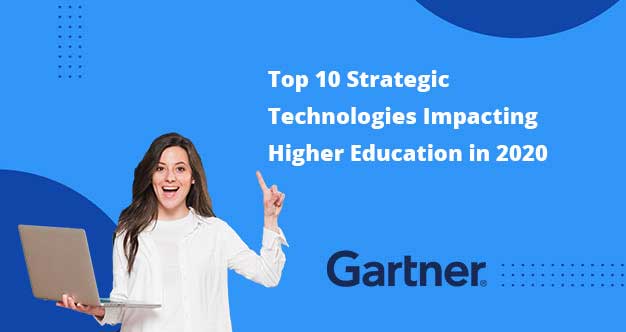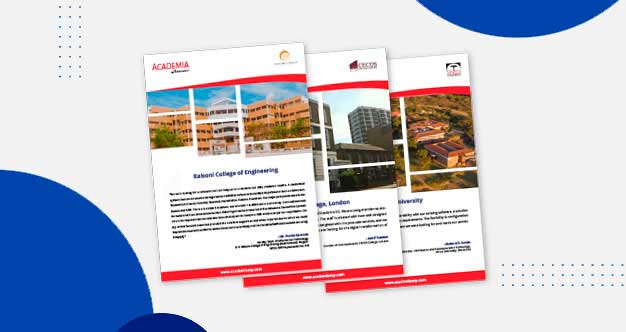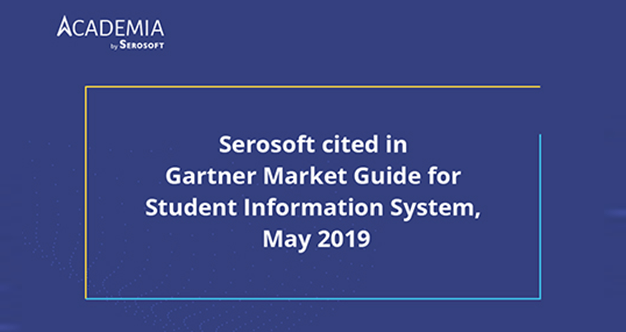Unlocking the Future: A Comprehensive Blueprint for Digital Transformation in Education
Education is the most powerful tool that we can use to change the world; these are the insightful words of Nelson Mandela.
And we strongly believe that technology is the most powerful tool that can change the world of education.
In the landscape of education, the integration of digital technology has emerged as a powerful catalyst for transformation. The digital revolution in education has brought about unprecedented changes, reshaping the way students learn, educators teach, and institutions operate. In this comprehensive guide, we delve into everything you need to know about digital transformation in education, exploring key concepts, benefits, challenges, and the future of learning.
Understanding Digital Transformation in Education
Digital transformation in education refers to the strategic use of digital technologies to enhance and redefine the teaching and learning experience. It goes beyond the mere adoption of technology and involves a fundamental shift in the educational paradigm, leveraging digital tools to improve efficiency, accessibility, and outcomes.
Key Components of Digital Transformation
- Integration of Smart Classrooms
- Interactive Whiteboards: These tools empower educators to create dynamic, multimedia-rich lessons, fostering engagement and interaction.
- Digital Content: Smart classrooms leverage a plethora of digital content, including videos, simulations, and e-books, offering a diverse and interactive learning experience.
- Collaborative Tools: Platforms like Google Workspace and Microsoft Teams facilitate real-time collaboration among students and educators, promoting teamwork and communication skills.
- Immersive Learning Experiences: AR and VR technologies create realistic and immersive learning experiences, especially in fields such as science, history, and medical education.
E-Learning Platforms and Learning Management Systems (LMS)
- Remote Learning Opportunities: E-learning platforms enable students to access educational resources from the comfort of their homes, providing flexibility in scheduling and reducing geographical constraints.
- Content Customization: LMS allows educators to tailor content to individual learning styles, providing adaptive learning experiences that cater to diverse student needs.
- Progress Tracking: These systems offer robust analytics, allowing teachers to monitor student progress, identify learning gaps, and provide timely interventions.
- Intelligent Tutoring Systems: AI-powered tutoring systems provide real-time feedback and support, offering personalized assistance to students in need.
- Data Analytics and Learning Analytics
- Predictive Analytics: Educational institutions can use predictive analytics to forecast student performance trends, enabling proactive interventions to support struggling students.
- Personalized Learning Paths: Learning analytics tools help create personalized learning paths, ensuring that each student receives the right level of challenge and support.
- Continuous Improvement: By analyzing data on teaching methods and content effectiveness, educators can make data-driven decisions to enhance instructional strategies.
Enhanced Accessibility
- Global Reach: Digital transformation breaks down geographical barriers, allowing students to participate in international collaborations, exchange programs, and global learning communities.
- Inclusive Learning: Accessible design features in digital content and tools accommodate diverse learning needs, fostering inclusivity for students with disabilities.
- 24/7 Learning: Digital resources provide the flexibility for students to learn at their own pace, anytime and anywhere, accommodating different time zones and personal schedules.
Personalized Learning Experiences
- Adaptive Learning Technologies: Personalized learning platforms use adaptive algorithms to tailor content to the individual needs of each student, ensuring mastery before progressing.
- Differentiated Instruction: Educators can use digital tools to provide varied learning experiences, catering to different learning styles and addressing the unique needs of each student.
- Immediate Feedback: Digital assessments and quizzes offer instant feedback, allowing students to track their progress and address misconceptions promptly.
- Personalized Learning Paths: AI algorithms analyze student performance data to create adaptive learning paths, catering to individual strengths and weaknesses.
- Virtual Laboratories: VR enables students to conduct experiments in virtual laboratories, providing a safe and cost-effective alternative to traditional hands-on labs.
- Field Trips in Virtual Spaces: AR and VR can transport students to historical sites, museums, and other locations, enriching the learning experience beyond the classroom.
Efficient Administration and Resource Management
- Paperless Administration: Digital transformation streamlines administrative processes, reducing paperwork and manual tasks, and allowing administrators to focus on strategic initiatives.
- Resource Optimization: Analytics tools help institutions optimize resource allocation, ensuring that budgets, personnel, and facilities are utilized efficiently.
- Automated Workflows: Workflow automation in administrative tasks, such as enrollment and grading, reduces turnaround times, enhancing overall operational efficiency.
- Automated Administrative Tasks: AI automates routine administrative tasks, freeing up time for educators to focus on personalized instruction and mentorship.
Monitoring Student Progress through Technology
Employing technology in education streamlines the tracking of students’ development. By digitizing various assignments, educators can easily assess and compare students’ work, gaining valuable insights into individual performance and identifying areas for improvement.
Enhancing Outcomes with Precise Data Analytics
Educational institutions can harness the power of data analytics derived from students’ technological interactions to improve overall outcomes. This analysis provides valuable insights into the specific needs of students and classrooms, acting as a supplementary resource to educators’ professional expertise.
Fostering Collaboration through Digital Learning
Digital learning platforms facilitate seamless collaboration among students. Educators can efficiently create and manage groups, and collaborative authoring tools like Google Docs and Edmodo enable teamwork irrespective of geographical distances. Introducing students to these collaborative tools prepares them for future professional environments.
Future-Focused Curricula for Tomorrow’s Workforce
To remain relevant in the ever-evolving job market, educational institutions should integrate subjects such as robotics, artificial intelligence, and automation into their curricula. Despite challenges, the digitization of education accelerates curriculum development, ensuring students have access to up-to-date and pertinent content.
Strengthening Teacher-Parent Partnerships through Digitalization
Leveraging digital tools enhances communication between teachers and parents, positively impacting students’ academic performance and overall well-being. Automation facilitates the electronic delivery of progress and attendance reports, fostering a more transparent and collaborative relationship between parents and educators.
Time-Efficient Learning Opportunities
In areas with limited transportation infrastructure, a digital transformation in education proves invaluable. By offering courses online or through alternative channels like dish TV, students from remote areas can access quality education without the time-consuming commute. Initiatives like UNISA and GetSmarter exemplify how technology transcends geographical constraints, providing educational opportunities globally.
Operational Efficiency in Institutions with Automation
Operational efficiency in institution management can be significantly enhanced through the integration of automation and digitalization, particularly through the implementation of a Student Information System (SIS). By leveraging an SIS alongside other automated processes, institutions can streamline operations and improve overall productivity. Here are some key points and descriptions highlighting how automation, digitalization, and the use of an SIS contribute to operational efficiency:
Streamlined Processes: The integration of an SIS automates various administrative tasks related to student records, such as admissions, registration, and grading. This streamlines processes and reduces manual data entry errors, allowing staff to focus on more critical responsibilities.
Academia ERP/SIS and its 40+ modules- starting from admission, examination, to placement & alumni, the entire student life cycle and processes around it can be streamlined immensely through automation. Furthermore, Academia ERP/SIS’s 400+ comprehensive reports & AI-based analytics can give a deep insight & boost to the institute’s ROI.
Improved Communication: An SIS often includes communication features that enable seamless interaction between students, faculty, and administrators. Through built-in messaging systems and notifications, communication becomes more efficient, fostering better collaboration and engagement.
Academia ERP/SIS can help in enhancing communication amongst various publics of an institution in many ways- with Sera, the AI-based voice assistant in the mobile app, push notifications, emails, scheduled messages in-app, text messages, drive, Academia facilitates real-time sharing of important info and data.
Data-Driven Decision Making: An SIS collects and organizes vast amounts of student data, providing valuable insights for administrators. By leveraging analytics tools within the SIS, institutions can make data-driven decisions related to student performance, resource allocation, and curriculum planning, leading to more informed and effective strategies.
Academia ERP/SIS provides an in-depth view & insight into each & every function of the institution with its robust & comprehensive 400+ Reports. Furthermore, Academia has a dedicated Management Login- which gives higher-ups a bird’s eye view of the institute or the group of institutes at a single glance. They can plan the resource allocation & strategize with more accuracy & driven by data.
Enhanced Accessibility: With an SIS, students and faculty have access to important information anytime, anywhere. Online portals and mobile applications provide convenient access to course materials, grades, schedules, and other relevant information, promoting greater accessibility and flexibility.
Academia’s involvement in the development and implementation of SIS ensures that students and faculty can access vital information anytime, anywhere. Through the creation of user-friendly online portals and mobile applications, academia facilitates convenient access to course materials, grades, schedules, and other relevant information, thereby promoting greater accessibility and flexibility for all stakeholders.
Cost Savings: Implementing an SIS reduces the need for manual paperwork and administrative tasks, resulting in cost savings over time. By automating processes such as registration and enrollment, institutions can lower operational expenses and reallocate resources to areas that directly impact student success.
Academia’sAutomation via SIS leads to significant cost savings for institutions. By streamlining processes such as registration and enrollment, the need for manual paperwork and administrative tasks is reduced, resulting in lower operational expenses over time. These cost savings enable institutions to reallocate resources to areas that directly impact student success, enhancing overall efficiency and effectiveness. It gives a significant boost to the ROI, you can even try the ROI calculator – click here.
Scalability and Configurability: An SIS is designed to scale alongside the institution’s growth and evolving needs. As the student population expands or new programs are introduced, the system can accommodate increased workload and complexity, ensuring continued operational efficiency and effectiveness.
Academia’s expertise in SIS ensures that institutions have access to scalable and flexible solutions that can adapt to their evolving needs. As the student population grows or new programs are introduced, the SIS can accommodate increased workload and complexity seamlessly. This scalability and flexibility ensure that operational efficiency is maintained, allowing institutions to continue providing quality education and services regardless of changes in size or scope. Academia is highly configurable with other automation tools like KOHA, Moodle, Tally, etc. that have already been used by the institute.
Compliance and Risk Management: An SIS helps ensure compliance with regulatory requirements and data protection laws. By centralizing student data and implementing robust security measures, institutions can mitigate the risk of data breaches and non-compliance, safeguarding sensitive information and maintaining trust with stakeholders.
Academia ERP provides complete automation with strict compliance – it is VAPT-certified, GDPR compliant, & follows international standards on security & thus trusted by its 350 + clients across 26 countries.
Digitalization through a Student Information System is instrumental in enhancing operational efficiency in institution management. By streamlining processes, improving communication, harnessing data insights, and ensuring compliance, institutions can optimize their resources, enhance student experiences, and achieve their strategic goals more effectively.
Challenges in Implementing Digital Transformation
- Digital Divide
- Access to Devices and Internet: Bridging the digital divide requires addressing disparities in access to devices and reliable internet connections, ensuring all students have equal opportunities for online learning.
- Digital Literacy: Promoting digital literacy programs helps bridge the gap by equipping students and educators with the necessary skills to navigate the digital landscape effectively.
- Community Partnerships: Collaborating with community organizations and businesses can provide resources and support to bridge the digital divide in underserved areas.
- Resistance to Change
- Professional Development: Investing in comprehensive professional development programs equips educators with the skills and confidence to integrate digital tools into their teaching methods.
- Change Management Strategies: Implementing effective change management strategies involves transparent communication, involving stakeholders in decision-making, and addressing concerns proactively.
- Showcasing Success Stories: Highlighting success stories and positive outcomes from digital transformation initiatives can inspire and motivate educators to embrace change.
- Data Security and Privacy Concerns
- Compliance with Regulations: Educational institutions must stay informed about data protection regulations and ensure compliance to safeguard student and institutional data.
- Cybersecurity Training: Providing ongoing cybersecurity training for educators, administrators, and students helps create a culture of awareness and responsibility regarding data security.
- Secure Infrastructure: Investing in secure infrastructure, including encrypted communication channels and secure servers, protects against potential data breaches.
- Credential Verification: Blockchain ensures the authenticity of educational credentials, simplifying the verification process for employers and academic institutions.
- Decentralized Learning Records: Students can have ownership of their learning records on the blockchain, providing a secure and tamper-proof repository for their academic achievements.
- Reducing Credential Fraud: Blockchain reduces the risk of credential fraud by creating a transparent and traceable record of academic achievements, safeguarding the integrity of educational credentials.
Conclusion
Digital transformation in education is a dynamic and ongoing process that holds the key to unlocking the full potential of learning. By embracing innovative technologies, educators, students, and institutions can create a future where education is accessible, personalized, and equipped to meet the challenges of tomorrow. As we navigate this transformative journey, it is essential to address challenges, foster inclusivity, and continually adapt to the ever-evolving landscape of digital education.
Frequently Asked Questions (FAQs)
- What is The Future of Learning: Emerging Trends in Digital Transformation?Extensive use of AI – Artificial intelligence, VR – Virtual reality & Blockchain technology for more personalized, enigmatic & simulation-based education is what lies ahead in education automation.
- How does digital transformation benefit students with diverse learning needs?
Digital transformation allows for personalized learning experiences, catering to diverse learning needs. Adaptive technologies and multimedia resources support different learning styles, ensuring that every student can thrive.
- What steps can educational institutions take to overcome the digital divide?
- To bridge the digital divide, institutions can implement initiatives such as providing subsidized devices, offering internet connectivity solutions, and developing partnerships with technology companies for resource sharing.
- How can educators integrate digital tools into traditional teaching methods?
- Educators can undergo professional development to gain proficiency in using digital tools. Integrating these tools gradually, starting with simple applications, and encouraging collaboration among teachers can facilitate a smoother transition.
- What role does cybersecurity play in digital transformation in education?
Cybersecurity is crucial to protecting sensitive student and institutional data. Educational institutions must implement robust security measures, conduct regular audits, and educate staff and students about cybersecurity best practices.How can institutions ensure the privacy of student data in the era of digital transformation?
Institutions can ensure privacy by implementing strict data protection policies, obtaining informed consent, and regularly auditing data handling practices. It is essential to stay compliant with data protection regulations and prioritize the security of sensitive information. Still, you want to connect: Request a demo now.
Related Posts:
 Higher Ed Plans
Higher Ed Plans K12 Plans
K12 Plans










